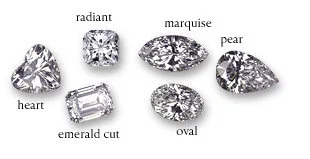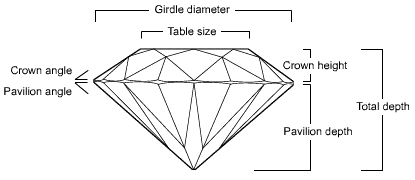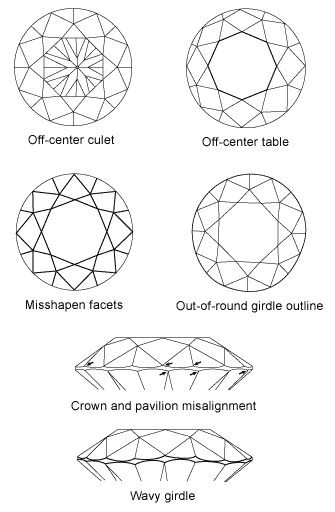The Four C’s
Carat
The word “carat”, (abbreviated ‘ct’) refers to the weight of the diamond. It is a basic unit of measurement for all gemstones and one carat equals 1/5th of a gram. A small paperclip weighs about a carat.
It is important to understand that larger diamonds are rarer than small diamonds, therefore they are worth more. What can be confusing is that diamond pricing isn’t linear: for example, a one carat diamond, all other factors being equal, is not twice as much as a half carat. It is over 3.5 times the price!
Certain sizes such as 0.50ct, 0.75ct, 1.00ct and 1.50ct, are psychologically important to consumers. Just remember, larger diamonds cost more per carat than smaller diamonds. Therefore there can be a large difference between a 0.99ct diamond and a 1.00ct diamond, even though they will visually look the same.
Color
Diamonds actually come in all kinds of colors, however the most sought after are those that have fine color, or little to no visible color at all. Truly colorless diamonds are rare and most of the diamonds used in the jewelry industry are nearly colorless with faint yellow or brown tints. The less color, the higher the value. “Fancy” diamonds are naturally occurring colored diamonds and their grade and value increase with color intensity. “White” diamonds are graded on a scale of D through Z.
Diamond color is graded in the lab while viewing the underside of the diamond. The differences in diamond color are so slight, that once mounted, G, H, and I may look colorless. Only an experienced eye can see the faint yellowish or brownish color.
Cut
Cut refers not only to the shape of the diamond, but also to the proportions, symmetry, and finish. The brilliant round cut is the most popular, reflects the most light, and of course is the most expensive. In fact, round diamonds have their own pricing structure. Below are some of the other cuts available.
The brilliant round diamond is precisely cut and usually has 58 facets. The angles of the cuts are critical. An ideal cut diamond will allow the light that enters it to be reflected back out through the top, giving the diamond its brilliance. Below is a diagram of a round diamond highlighting its various parts.
A well-cut diamond with good proportions and polish will sparkle with light and brilliance. Conversely, a poorly cut diamond will allow the light to pass through the bottom and will not appear as brilliant. Illustrated below are some examples of poorly cut diamonds.
Clarity
Clarity refers to both the presence of internal and external features in a diamond. Internal features are called “inclusions” and can include breaks, foreign bodies or natural elements in the diamond. External features are called “blemishes” and include surface irregularities and scratches. Both of these features lower the clarity grade and the value of the diamond, but in most cases they have very little effect on a stone’s beauty or durability. In fact, inclusions help identify a diamond as no two diamonds have exactly the same inclusions. The clarity scale rates diamonds from flawless to imperfect.
No one “C” is more important than any other. They all factor equally in the price of a diamond, so purchasing a flawless diamond that is “K” in color, may end up being equivalent to a diamond that is colorless but very included.







